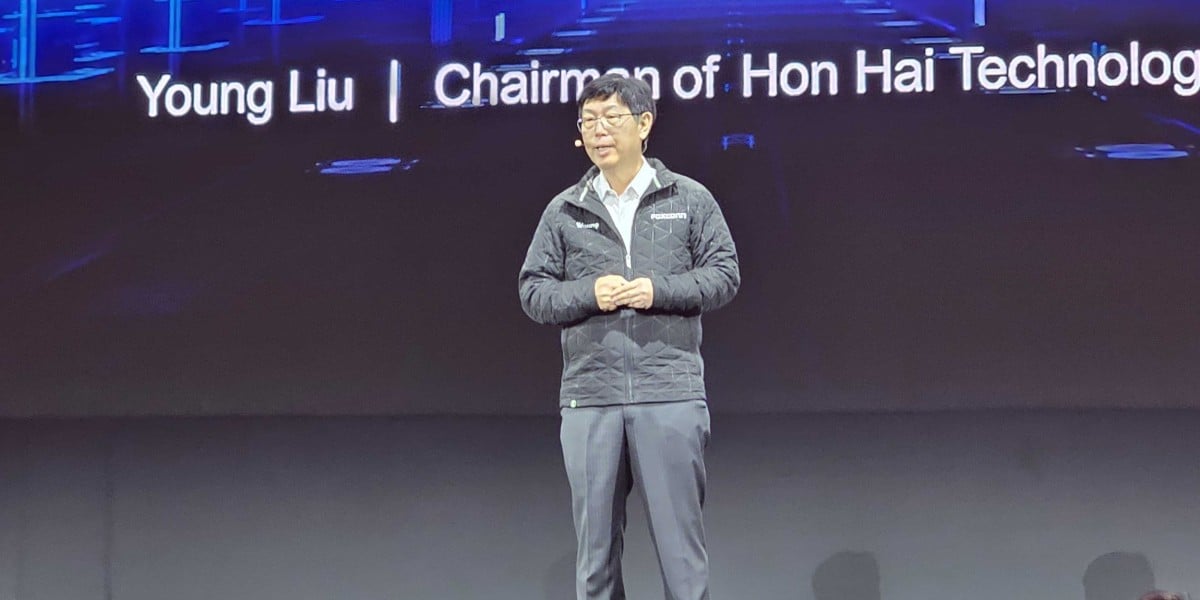Foxconn predicts AI will destroy low-end manufacturing jobs
Computex Foxconn chair Young Liu has predicted the combination of generative AI and robotics will destroy low-end manufacturing jobs and called on world leaders to recognize inevitable geopolitical shifts that will follow.
Liu on Tuesday delivered a keynote address at the Computex conference in Taiwan and advanced a theory that rich nations do two things to keep the cost of manufactured goods low: Allow immigration to bring in more people willing to work for low wages and outsource to low-GDP countries where costs are lower.
The contract manufacturing giant’s chair sees limits to those trends, as “eventually you will run out of low-GDP countries” and immigration becomes a political issue.
“Generative AI and robotics will fill the void,” he said. “That is the opportunity I see when a country becomes more prosperous – the low-GDP work will be done by GenAI and robotics.”
“I think that is the real challenge for all developed countries,” Liu added. “I urge leaders of developed countries to watch this very carefully.”
If those leaders are listening, he’ll tell them that Foxconn is proof of AI-induced change as after applying generative AI to its own operations it’s found that software working alone can do 80 percent of the work required to set up equipment for a new production run – and do it faster than people. AI struggles to finish the job unless it has human assistance, but the combination of bots and brains is faster at finishing the job than wetware working alone.
Liu also said generative AI is helping Foxconn to resolve production issues more quickly.
“We thought maybe we could replace every human,” Liu admitted. “We quickly realized we could not.” But Foxconn has saved enough time that its human experts can now focus on gnarly problems, an outcome the Chairman likes as he finds it hard to hire skilled and experienced staff and would rather they work on high-value tasks.
“FoxBrain”
Foxconn is therefore investing in more AI to power its factories. Liu revealed the company is creating its own manufacturing-centric model called “FoxBrain” that will blend Meta’s Llama 3 and 4 models and data drawn from its own operations to create what he described as “Agentic workflow for very domain specific applications.”
The manufacturing giant, formally named Hon Hai Technology Group, intends to open source that model. It also intends to deploy a model to all of its factories and have them contribute data about its performance so that Foxconn headquarters can constantly refine the company AI.
- Non-x86 servers boom even faster than the rest of the AI-infused and GPU-hungry market
- Nvidia joins made-in-America party, hopes to flog $500B in homegrown AI supers by 2029
- Fear of Foxconn reportedly driving possible Nissan, Honda and Mitsubishi merger
- Lenovo turns to India as source of AI servers
Liu also revealed that Foxconn uses AI to design factories by employing Nvidia’s Omniverse tool to create a digital twin – even before it has a physical factory to simulate. An AI then virtually operates the digital twin, producing optimization suggestions that are later modelled in the digital twin. Once Foxconn feels this process has produced an optimized design it starts to build in the real world.
Foxconn can already use robots to build robots, a feat that Liu seemed to find wondrous.
EV platform revving up
Liu also mentioned Foxconn’s plans to enter the automotive market with a reference design for an electric vehicle.
He told the Computex crowd that Foxconn uses this approach when working with PC vendors, who take its designs and tweak them to create custom products.
“A good reference design saves a lot of time and improves time to market and cost for our customers,” he said, citing an 80 percent reduction in the work required to create new models. “Please stay tuned for this new EV announcement,” he said. ®
关于《Foxconn predicts AI will destroy low-end manufacturing jobs》的评论
暂无评论
